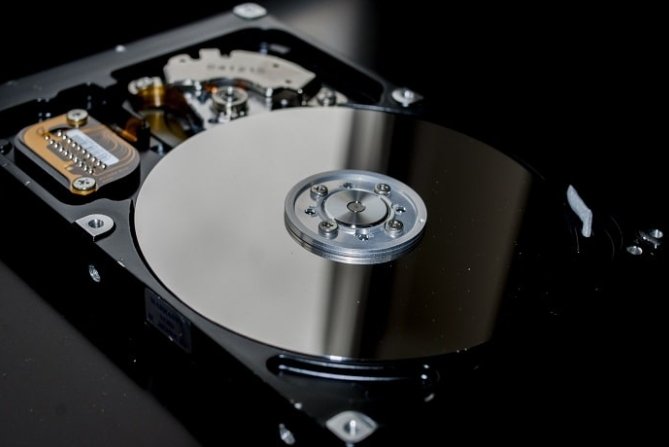We often think of our digital files—those carefully crafted reports, family vacation photos, or the all-important collection of cat videos—as safely stored away inside our computers. But the truth is, hard drives are not invincible. One day, your machine could fail without warning, and suddenly, years of memories or essential documents vanish before your eyes.
Think it won’t happen to you? Think again.
Hard drive crashes are more common than most people realize. Whether it’s due to aging hardware, power surges, mechanical failure, or even a simple drop, your computer’s storage device is vulnerable. But don’t panic just yet. If your drive has crashed, you still have options—and recovery may be more possible than you think.
Let’s walk through what a hard drive crash actually means, how to diagnose it, and the most effective steps you can take to recover your data.
What Happens When a Hard Drive Crashes?
A hard drive crash refers to the failure of a computer’s storage device, and it can happen in two main ways: logical and physical.
- Logical crashes occur when the software or file system becomes corrupted. Your data may still be intact, but the computer can’t access it properly.
- Physical crashes happen when the hardware itself—such as the internal disks, read/write heads, or motor—gets damaged. These are more serious and often require professional intervention.
Regardless of the type, the result is often the same: you turn on your computer, and your operating system can’t boot, your files are inaccessible, or you hear strange clicking sounds from the machine.
First Things First: Don’t Make It Worse
Before you jump into rescue mode, take a deep breath—and stop using the computer immediately. Every second the drive remains powered on after a crash could worsen the damage or overwrite recoverable data.
If you’re dealing with a laptop, shut it down. If it’s a desktop, turn off the power. The less activity, the better your chances of recovery.
Step 1: Identify the Type of Crash
Understanding whether your hard drive experienced a logical or physical failure can guide your next steps.
- Signs of a logical crash:
- Computer boots but can’t load files
- Frequent error messages
- Files missing or corrupted
- System freezes or blue screen of death
- Signs of a physical crash:
- Grinding, clicking, or buzzing sounds
- Computer doesn’t recognize the hard drive at all
- BIOS doesn’t detect the drive
- Burning smell or visible damage
If you suspect a physical crash, do not attempt to open the drive yourself. These are precision components that require a cleanroom environment for inspection and repair.
Step 2: Try Software Recovery (For Logical Crashes)
If your drive isn’t physically damaged and is still detected by your system or an external enclosure, there are recovery tools available that might do the trick:
- Recuva (Windows): Free and user-friendly, Recuva can help recover lost or deleted files.
- PhotoRec (Windows, macOS, Linux): Despite the name, it recovers a variety of file types—not just photos.
- EaseUS Data Recovery Wizard: Offers a more guided experience and previews recoverable files.
- Disk Drill: Popular on macOS and Windows, known for deep scanning and intuitive interface.
You’ll typically connect the crashed drive as a secondary drive to another working computer or use a USB enclosure to access it externally. Always recover files to a different drive to avoid overwriting.
Step 3: Call the Professionals (For Physical Damage)
When hardware failure is the culprit, it’s time to bring in the experts. Data recovery specialists use cleanroom facilities to open hard drives, rebuild damaged components, and extract data directly from the platters.
While this service can be expensive—ranging from a few hundred to several thousand dollars—it may be the only way to retrieve irreplaceable files. Reputable companies like DriveSavers, Ontrack, or Gillware offer diagnostics and no-data-no-fee guarantees.
Step 4: Prevention Is the Best Cure
No one wants to go through a hard drive crash twice. The best way to ensure your data’s safety is to never rely on a single point of failure. Here’s how:
- Back up regularly. Use the 3-2-1 rule: three copies of your data, two different formats (like cloud + external drive), and one offsite.
- Use cloud storage for important files. Services like Google Drive, Dropbox, and iCloud provide redundancy and easy access.
- Replace aging drives every 3–5 years, especially if they start showing signs of trouble.
- Install surge protectors and use laptops on battery power when possible to avoid power-related crashes.
Final Thoughts
A crashed hard drive can feel like a catastrophe—but with the right knowledge and a calm approach, it doesn’t have to mean the end of your data. Whether you opt for recovery software or seek professional help, there’s a good chance you can retrieve those lost files. More importantly, let the experience be a wake-up call to take your data’s safety seriously moving forward.
If you need help picking the right data recovery tool, want a guide to backing up files, or want help recognizing crash warning signs, I can help.




